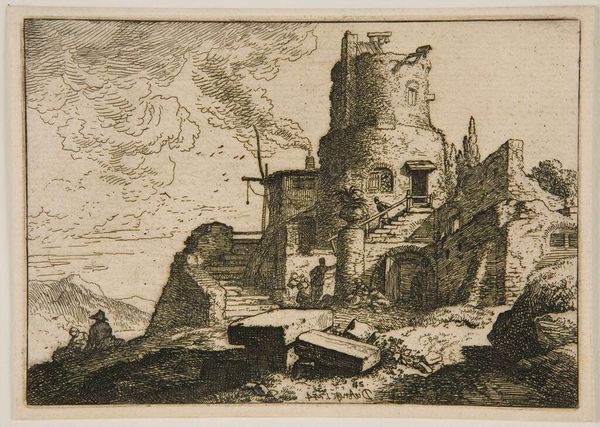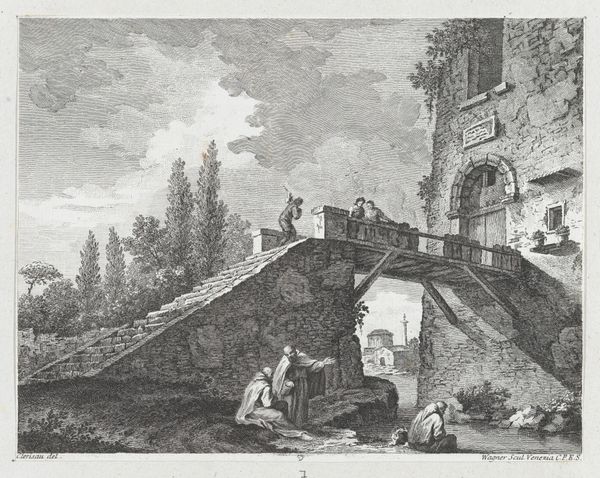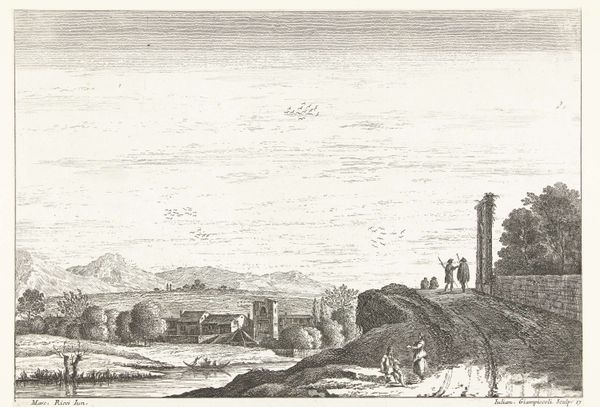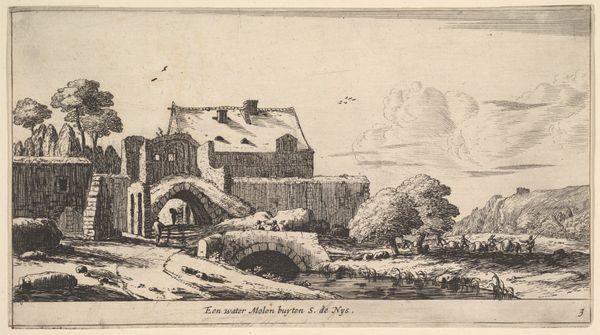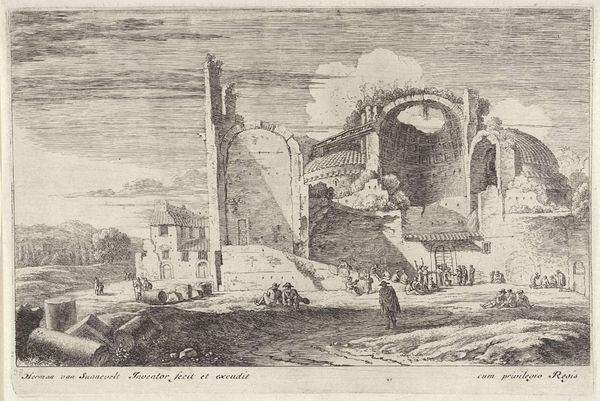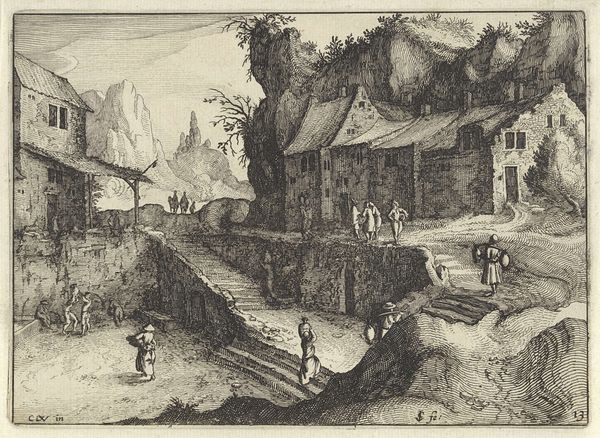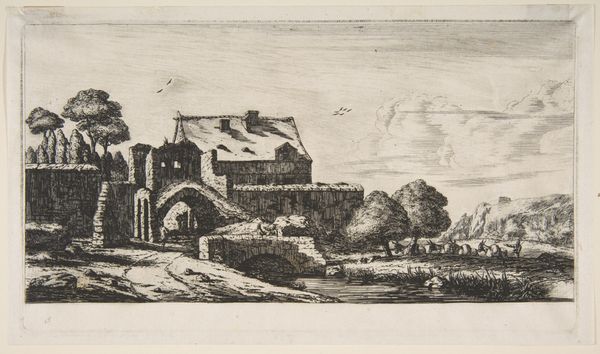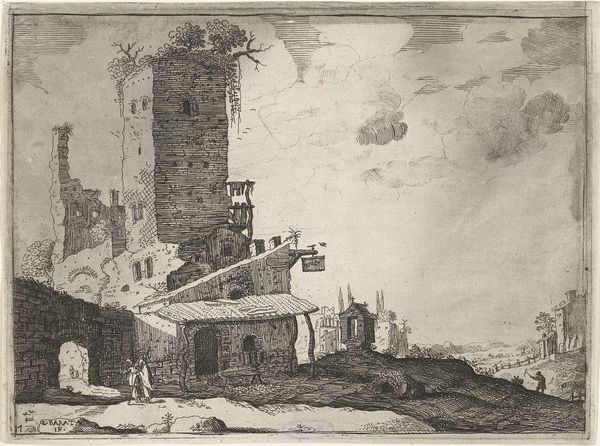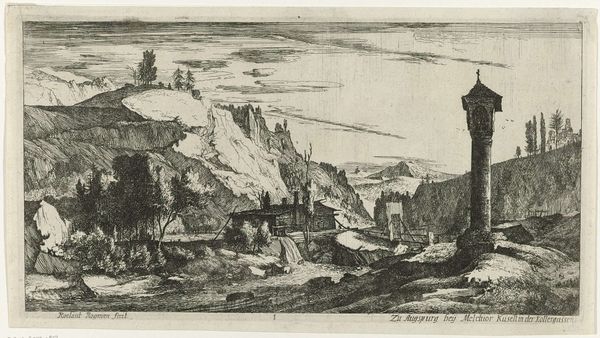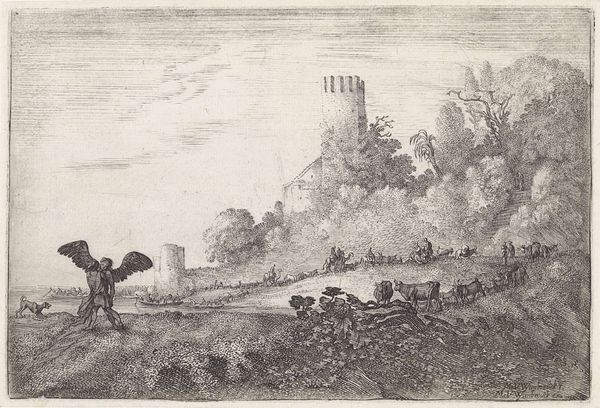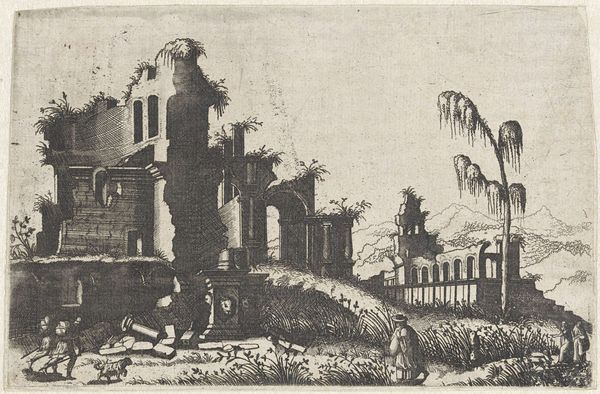
print, etching
# print
#
etching
#
old engraving style
#
landscape
#
etching
#
figuration
#
romanticism
Dimensions: height 102 mm, width 138 mm
Copyright: Rijks Museum: Open Domain
Curator: Here we have "Winterlandschap," a landscape rendered as a print, etched by Jacob van Kouwenhoven. The date of its creation is approximated to sometime between 1782 and 1825. What's your immediate impression? Editor: Bleak but strangely charming. The tonal range, particularly the stark contrasts, really emphasizes the cold and isolation inherent in this scene. It almost feels like a stage set, doesn't it? Curator: Indeed. The formal arrangement creates a clear dichotomy. Notice how the composition hinges on the architecture—the stone bridge as a heavy horizontal against the verticality of the thatched cottage. It really does speak to a certain constructed harmony, almost like a theatrical backdrop to lived experience. Editor: The figures laboring to pull that sledge over the ice also catch my eye. The conditions look arduous, the kind of scene that brings up important questions of rural life, poverty, and class dynamics in the late 18th or early 19th century. How might their struggle comment on a society indifferent to their labor? Curator: From a purely formal standpoint, consider how Kouwenhoven's deployment of light directs our gaze through the print. The figures provide focal points, drawing our eyes into an implied narrative, without the need for social commentary. The textural differences in the engraving—smooth ice against roughly textured stone—underscore the materiality, don't you think? Editor: While I appreciate the formal techniques, I cannot disengage from the social context. This aestheticisation of labour troubles me. It raises pertinent points about the relationship between representation and exploitation. Does romanticizing their difficulties serve only to numb our reaction to systemic inequalities? Curator: But look closer at the romantic ideal. Perhaps he is reminding us of something simpler that existed prior to industrialization? The bleak setting itself hints at a certain untamed power, doesn't it? The windswept tree. Editor: Possibly, but untamed power comes at a price for some. Anyway, it is important to question these scenes critically, because landscapes weren’t merely aesthetic exercises. They reflected very material social landscapes, too. Curator: Well, whichever viewpoint one embraces, there's no denying that "Winterlandschap" is an evocative artwork that pulls us in. Editor: A definite visual encounter—inviting necessary conversations concerning art and societal values.
Comments
No comments
Be the first to comment and join the conversation on the ultimate creative platform.
